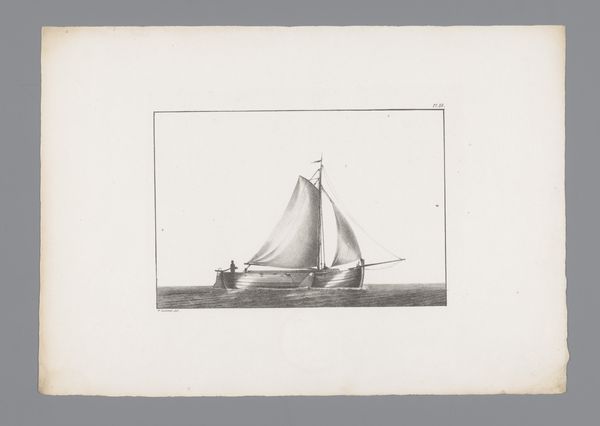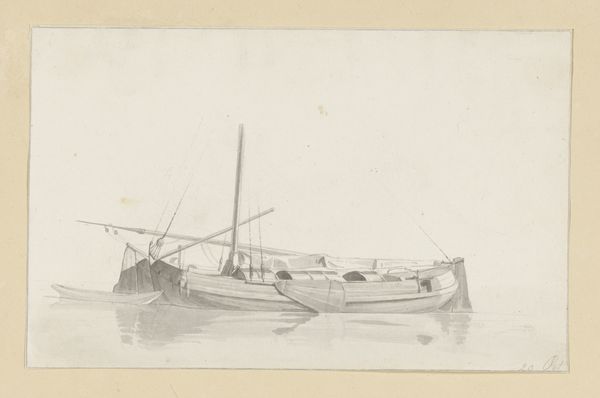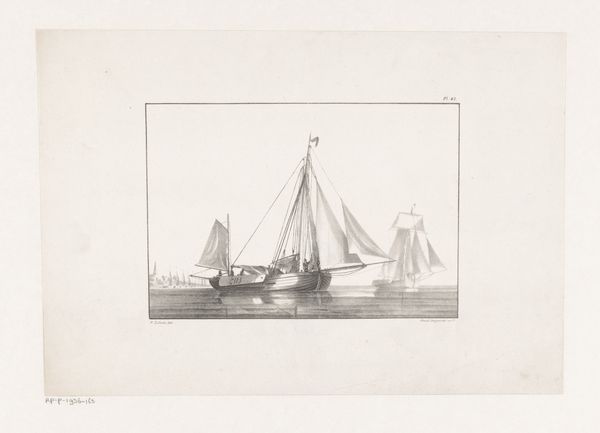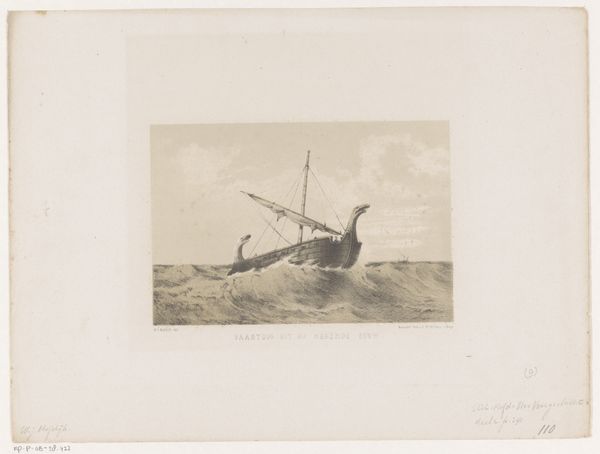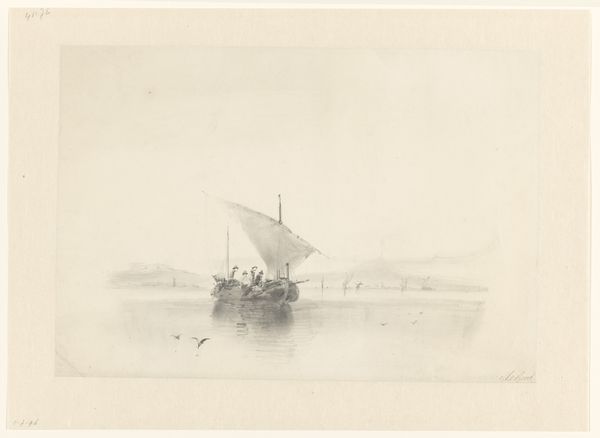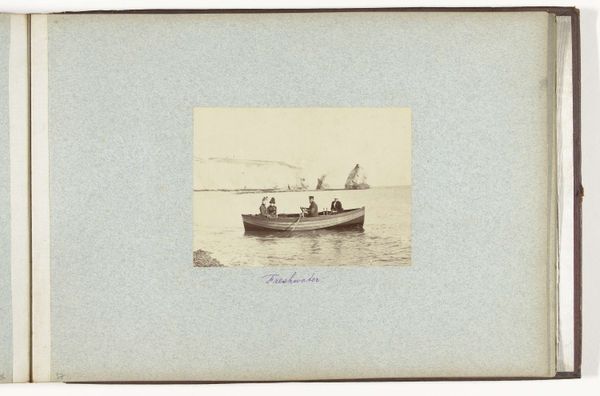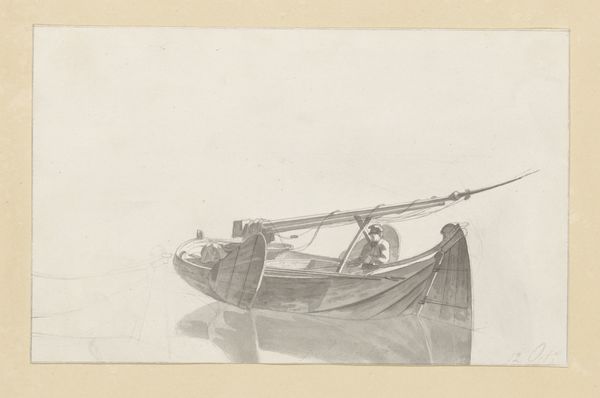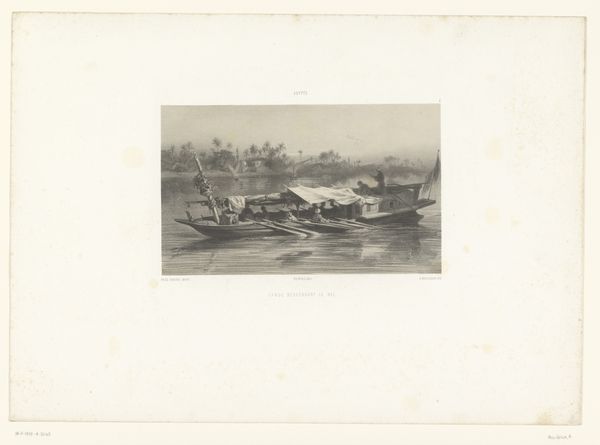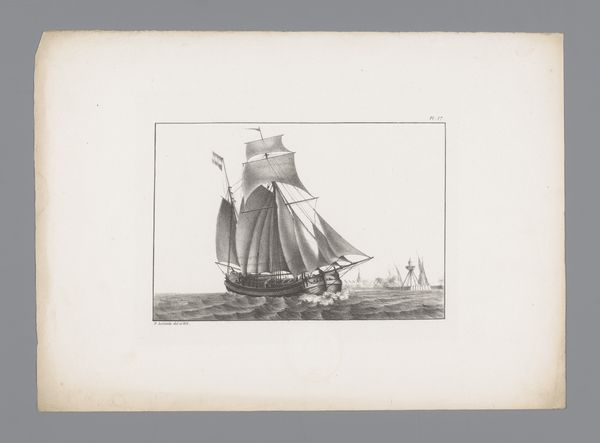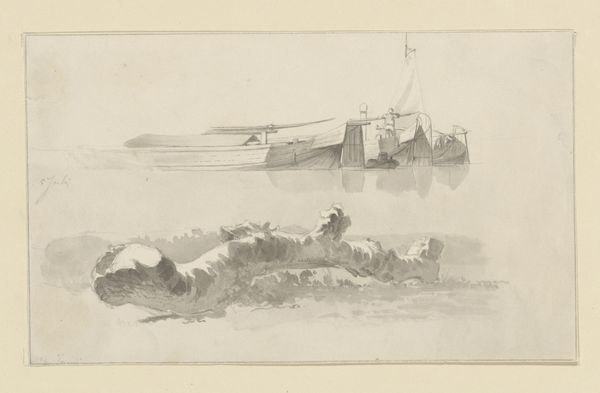
print, engraving
#
narrative-art
# print
#
landscape
#
romanticism
#
genre-painting
#
engraving
#
sea
Dimensions: height 270 mm, width 353 mm
Copyright: Rijks Museum: Open Domain
Editor: Here we have Eugène Lepoittevin's "Vissersboot op zee met zes opvarenden," or "Fishing boat at sea with six crew members," from 1832. It’s an engraving, and it strikes me as very…stark. Almost bleak, with the rough sea and the somewhat worn boat. What can you tell me about it? Curator: Well, let's consider the materiality of the print itself. An engraving, multiple impressions possible, meant for wider circulation than a painting. What does this accessibility tell us about the intended audience and the message the artist, and perhaps more importantly, the publisher, aimed to convey? Consider the social context: who was buying these prints, and what aspects of daily life—like the labour of fishermen depicted—were they consuming as art? Editor: So you're saying that the medium itself—the engraving—suggests it was meant to reach a wider audience and maybe even comment on the lives of the working class? Curator: Exactly. Furthermore, let’s not overlook the 'how' of the piece. Lepoittevin’s labor, the engraver’s skill translating the scene onto a plate… These details become paramount. How does the printmaking process itself shape our understanding of the scene depicted, and our relationship to it as consumers of art? Editor: That's a different way of looking at it, rather than just focusing on the image itself. I'm so used to analyzing the composition. Curator: And we shouldn't ignore the depicted materials. The wooden boat, the rough sea...These were directly linked to the lives of the fishermen. Romanticism often idealizes, but by representing it in a reproducible, consumable format, it raises questions about the romanticizing—or perhaps exploiting—of labour and lived experience for public consumption. Editor: That's really fascinating! I hadn't considered how the *process* and the materials used to create the art change its meaning. It goes beyond the aesthetic to the social. Curator: Precisely! By examining the means of production, the materiality, and the intended audience, we gain a far richer understanding.
Comments
No comments
Be the first to comment and join the conversation on the ultimate creative platform.

